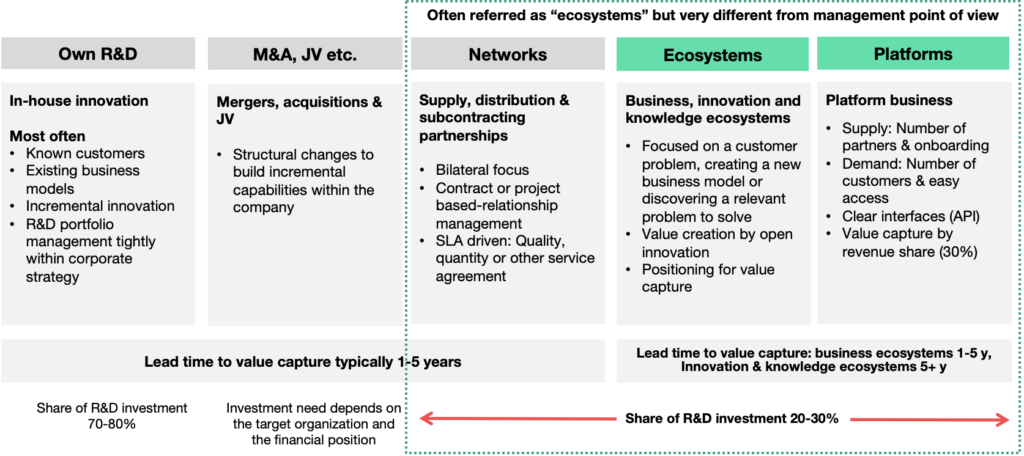Last week, I finished reading Hans Rosling‘s Factfullness. The book explains why we should go beyond our first impressions and seek information to back up our decisions and actions. The book is impressive. It is inspired by decades of research. Its content has been shared in numerous conferences and presentations over the years. Rosling’s message is clear: For every decision seek information and make decisions based on data. Otherwise, you may end up with a dilemma which he describes as: “If one has a hammer, every problem starts to look like a nail”. By that he refers to our tendency to go to the very tool that we are used to using, without seeking appropriate data to back up our actions.
There is a lot of talk about ecosystems. There is plenty of public funding available. Yet, ecosystems are not hammers, nor are problems they are solving nails. In fact, the decision to participate in or lead an ecosystem is a strategic decision. And like any other strategic decision, it calls for an understanding of the ecosystem strategy’s pros and cons vis a vis other innovation strategies.
To make the right decisions, ask the right questions
In today’s changing business environment, innovation is needed. But to ensure efficient innovation, innovation strategy is mandatory. Ecosystems, and related concepts like networks and platforms are all useful strategies that have their place in an organizations’ innovation toolbox. But to use a proper tool, we need to understand what the tool is used for – and gather the facts in order to choose the right one. In our view, when choosing an innovation strategy, answering the following questions serves as a good starting point:
- Can you identify the customer or customer segment?
- Can you articulate the customer need and value proposition?
- Do you have the resources and capabilities to market and sell the solution to your identified customer?
- Do you have the resources and capabilities to deliver the value proposition?
- Can you make money?
- Is your timeline from development to revenue short term?
If you answer “yes” to multiple questions, ecosystems as an innovation strategy might not be the best one. Instead, you maybe should look into your own R&D organization and just do it yourself. But of course, in real life, there are multiple options between own R&D and ecosystems.
Innovation Toolbox: Fifty shades of gray?
The “Innovation Toolbox” summarizes five principal strategies for innovation. There is no “one” winning strategy, but rather successful management of innovation is about creating and managing a portfolio of innovation – and investing accordingly.

When looking at short term solutions to known customer problems own R&D is often the fastest way to go. When lacking specific capabilities, M&A and Joint Ventures are often quicker solution than building capabilities organically. Networks, i.e. partnering with others in bi-lateral relationships are equally simple, and work especially when working with companies that have complementary capabilities.
Ecosystems are great when solving customer problems or grand challenges that a single organization cannot solve alone. They often link to platforms that enable new digital business models and value capture from innovative and sometimes disruptive solutions created by the ecosystem partners.
Change is constant, and innovation is mandatory
The decision to ecosystem or not to ecosystem is in fact a trick question. Strategic management of innovation is about managing opportunity and risk in today’s changing business environment. Hence, incremental innovation, often powered by own R&D, is mandatory to keep up to date with existing customers and markets changing needs. But it is not enough. In addition, organizations should explore the unknown to create new opportunities and to discover new customers and new needs. Or to solve meanignful problems that are yet to be solved, and create new business opportunities by doing that.
Hence, the right question may not be “to ecosystem or not to ecosystem” but rather “what is your innovation strategy?”. And that’s what we can help you with. Because having a clear view of the ecosystems that you are a part of, is a great starting point for developing ecosystem capabilities and operating model needed to create and capture value. Let’s talk!
PS. For further information about the differences between networks, ecosystems and platforms, please read the Ecosystem Handbook blog “fundamentals of value creation“.




